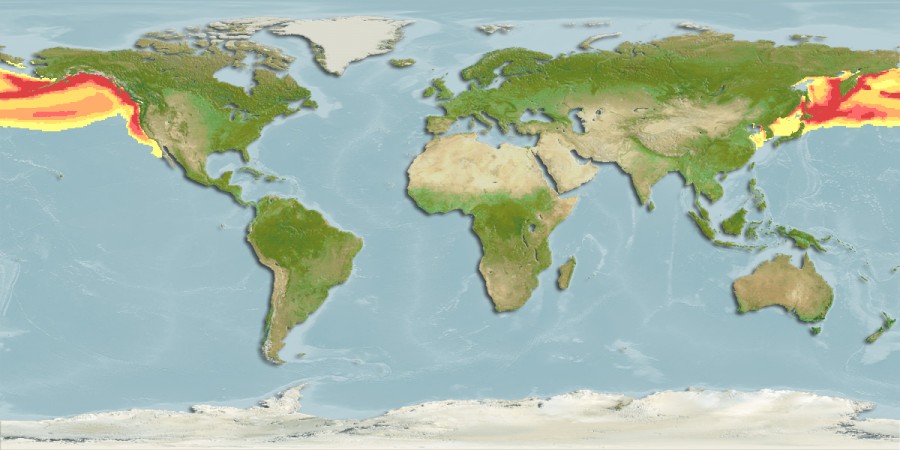The salmon shark is a common coastal and oceanic species that is found globally in the eastern and western North Pacific, from Japan and the Koreas to the Bering Sea, southward to southern California and possibly Baja California, Mexico (
Goldman et al. 2008,
Marine Species Identification Portal 2010). It is a wide-ranging species found at depths of 0-152 m in boreal to cool temperate waters (Marine Species Identification Portal 2010). It occurs singly or in schools. Congregations of salmon sharks are reported to occur along Pacific salmon migration routes and in bays near salmon spawning grounds during July and August in Alaska, with dispersal in late summer (Hulbert et al. 2005).
The salmon shark is a warm-blooded (endothermic) relative of the great white shark. It has a heavy, spindle-shaped body, short snout, the first dorsal fin is large and triangular and dark, and the underside of the body is white with blotches (Marine Species Identification Portal 2010, FishBase 2010). Length at maturity is reported as 125 and 145 cm for males and between 160 and 180 cm for females (Goldman et al. 2008). This species is an opportunistic feeder, and diet includes fish species (salmon, rockfishes, sculpins, Spiny Dogfish), crabs, squid and shrimp (Goldman et al. 2008).
Strandings of the Salmon Shark are often reported in the summer along the west coast of Vancouver Island (BC Shark Reports and Sightings 2010).
Report shark sightings to 1 877 50-SHARK (1-877-507-4275). Visit the BC Shark and Skate Sightings blog.
View a video of the salmon shark.
